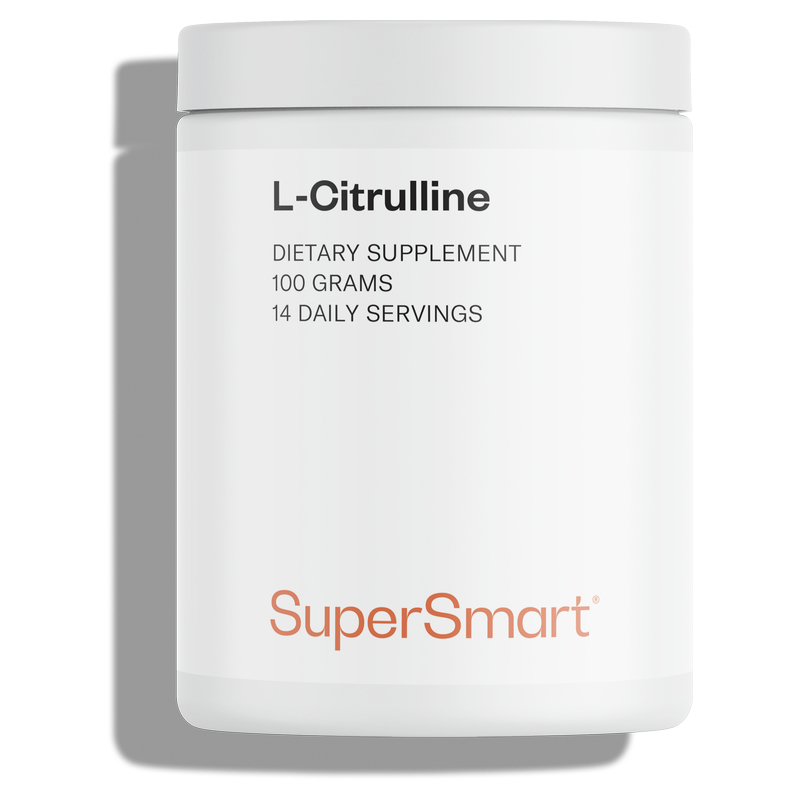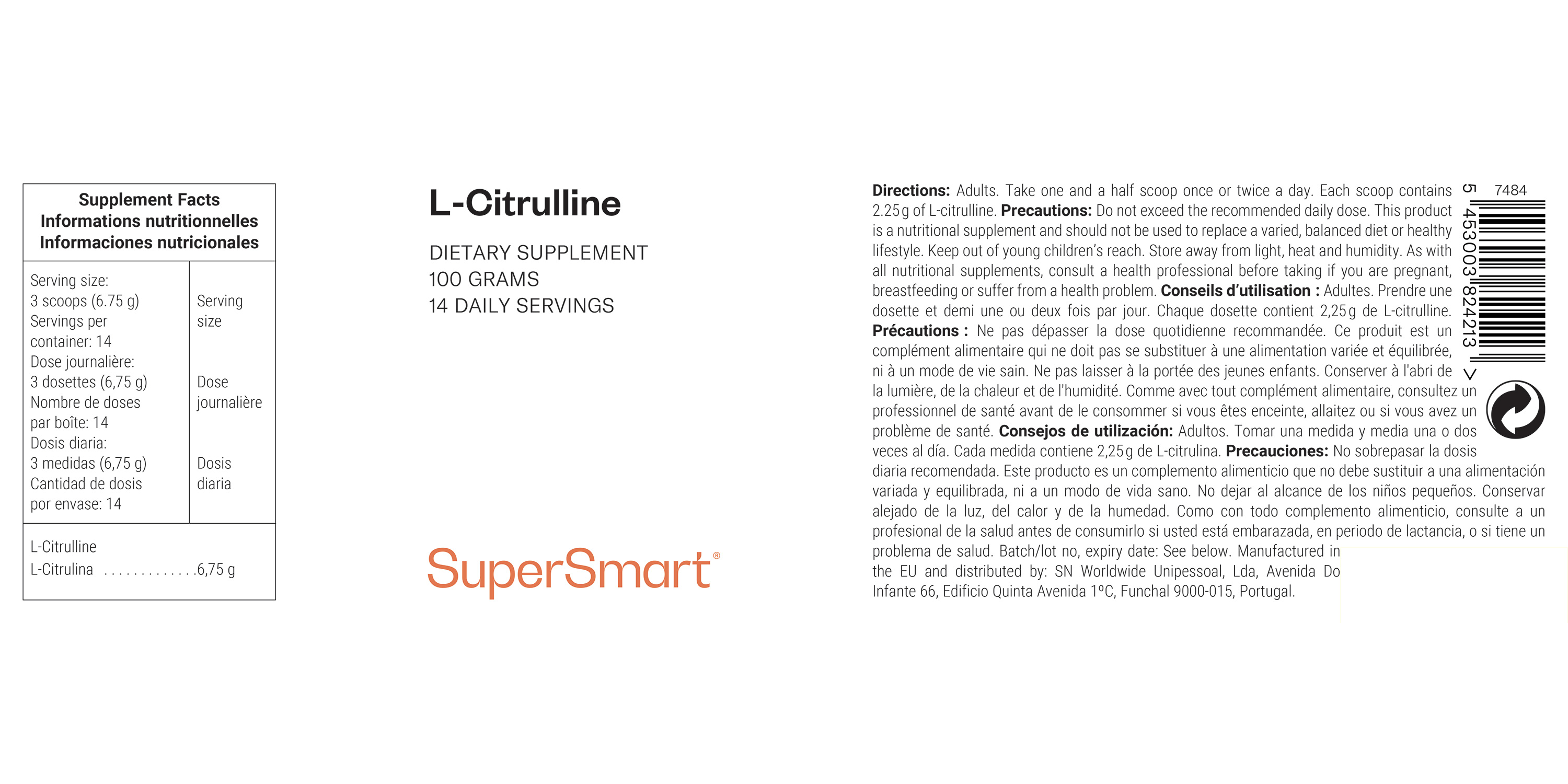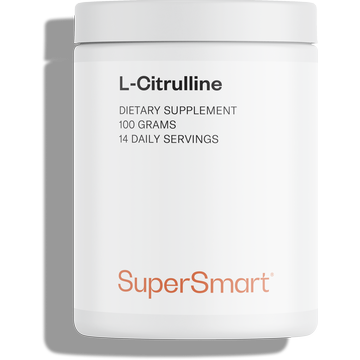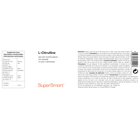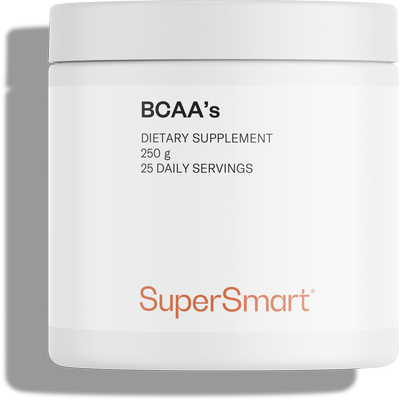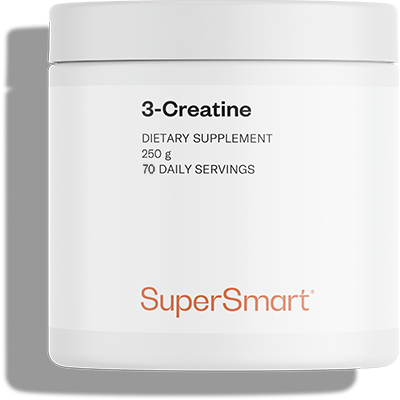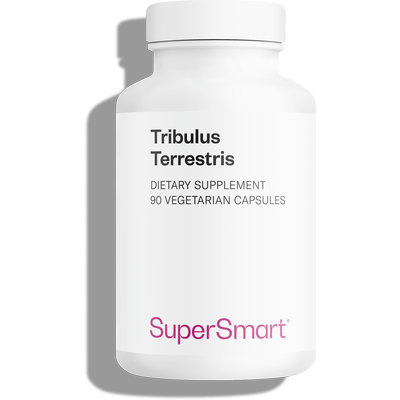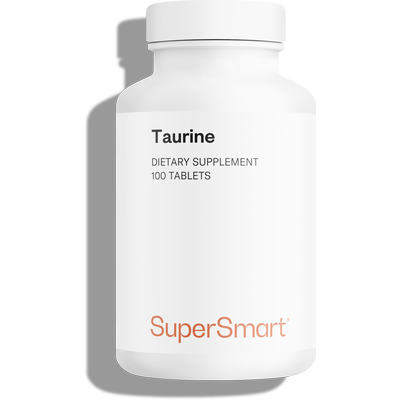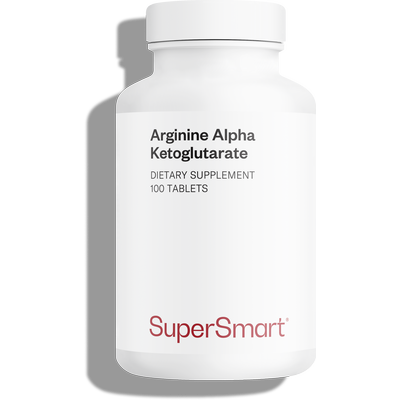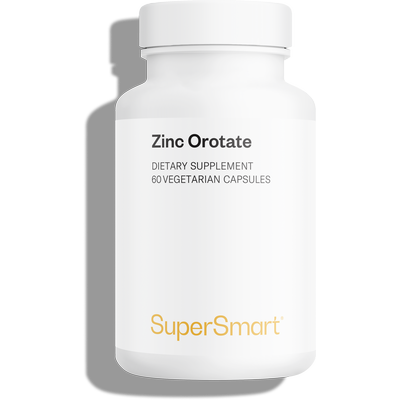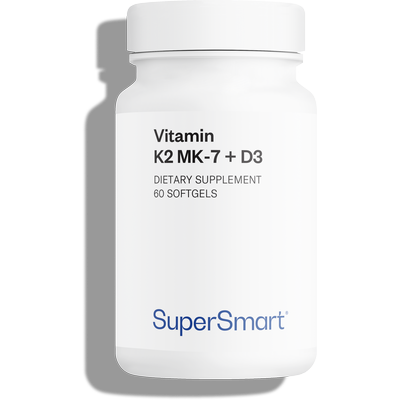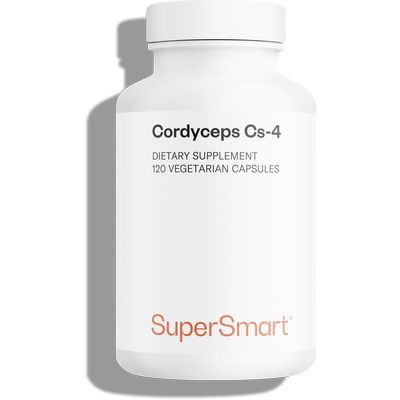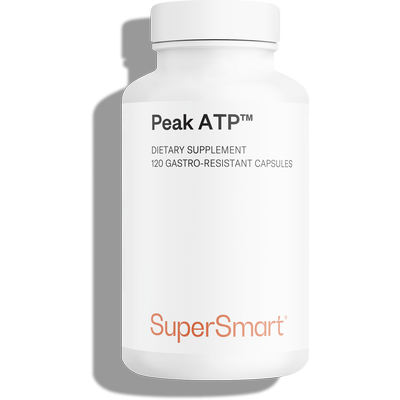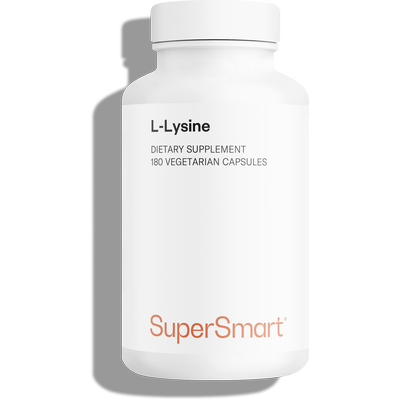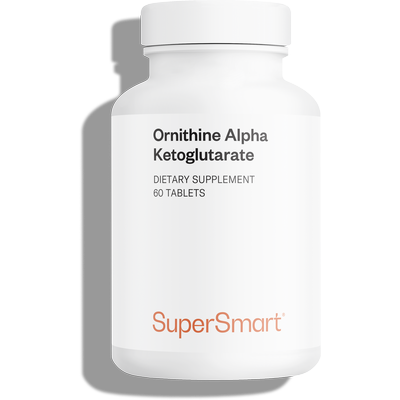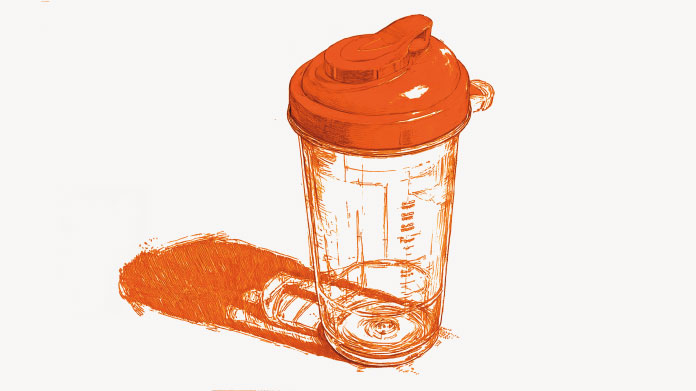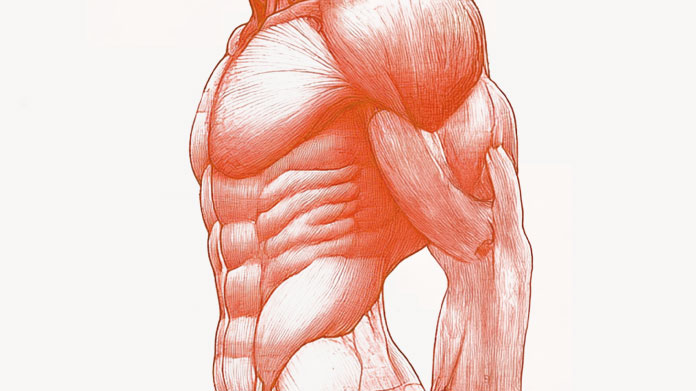Complete your selection
L-Citrulline is a natural supplement containing citrulline, a non-essential amino acid which is converted in the body into arginine. It is the only amino acid to escape splanchnic sequestration, a process which reduces amino acid circulation in older people.
What exactly is citrulline?
Citrulline is a non-essential amino acid produced in the small intestine from glutamine and arginine. In the 1980s, Windmueller and Spaeth showed that citrulline is released continually by the small intestine and that it enters the systemic circulation in a free form.
Its name comes from Citrullus vulgaris, the Latin for watermelon, one of the few foods in which it is found naturally (1).
Together with ornithine and arginine, it plays a particularly important role in what is known as the urea cycle. This is a collection of biochemical reactions which take place in the liver and which enable the body to purify neurotoxic ammonia.
Citrulline is a non-proteinogenic amino acid – it is not directly involved in making proteins and peptides.
What effects does citrulline supplementation have on the body?
Supplementing with citrulline increases the availability of citrulline and arginine, with very low levels of urinary loss (2).
When intake of proteinogenic amino acids such as arginine is judged to be excessive by the body, large-scale purification of these amino acids takes place in the liver. The majority of these amino acids are thus sequestrated and play no part in supporting optimal muscle synthesis. This is what’s known as splanchnic sequestration.. But citrulline is special: it escapes this sequestration and, unregulated by the liver, is able to circulate in the body and be converted into arginine.
As citrulline is not metabolised by the liver and is instantly converted into arginine, taking an oral citrulline supplement is actually more effective at increasing circulating arginine levels than taking arginine itself!
What is in L-Citrulline
Any questions?
Our team of nutrition experts and scientists has the answers.
Sarcopenia is the name given to the decline in muscle mass associated with ageing. It’s the result of a physiological process that begins at the age of 30 in men, and after the menopause in women. Over time, it becomes pathological as it tends to engender dependency and a reduction in everyday activities.
- The concentration of citrulline in the brain declines with age.
- In undernourished elderly people, there’s an increase in the sequestration of amino acids: systemic circulation of these amino acids decreases after meals. This gradually leads to a reduction in protein synthesis and sustains the loss of muscle seen in ageing. Citrulline escapes this sequestration process.
- There are very few foods rich in citrulline.
- Supplementing with citrulline poses no risk to health, even over the long term.
- Citrulline is converted into arginine, a proteinogenic amino acid.
Once ingested, citrulline is converted into arginine in the kidneys, which helps produce nitric oxide (NO), a gas involved in vasodilation, neurotransmission and production of ATP (cellular energy).
Plasma concentrations of citrulline and arginine increase rapidly in proportion to the dose of citrulline ingested (3). These concentrations return to their initial values after a period of about six hours.
Citrulline also crosses the blood-brain barrier without any difficulty, which is fortunate given that citrulline concentrations in the brain decline with age.
Long-term supplementation with citrulline produces no adverse side-effects, unlike ornithine and arginine (4). It is completely safe (5-7). It can be incorporated into other synergistic supplements:
- Organic Chaga Extract, the secret ingredient of the Siberian people;
- Cordyceps Cs-4, a natural extract of Cordyceps sinensis for boosting performance;
- The inimitable Daily 3, the most comprehensive multivitamin available in a single capsule.
This powdered supplement is offered in the purest form possible, unflavoured and unsweetened. When you choose this product, you are paying for and consuming active ingredients only, with no unnecessary additives (no sweeteners, artificial flavourings or added sugars). You can therefore consume it in the most natural way possible by simply mixing it with water, or you are free to personalise it : adding the sweetener of your choice, replacing the water with another drink (such as fruit juice), etc.
january 10 2025
résultat efficace dans ma pratique d'aviron, meilleur rendement, bonne récupération après effort
effective result in my rowing practice, better performance, good recovery after effort
 see the translation
Translated by SuperSmart - see the original
see the translation
Translated by SuperSmart - see the original
june 29 2024
june 5 2024
Très bon produit , je recommande .
Very good product, I recommend it.
 see the translation
Translated by SuperSmart - see the original
see the translation
Translated by SuperSmart - see the original
march 28 2024
Un acide aminé tiré de la pastèque dont la synthèse de déroule au niveau de l'intestin grêle, intérêt dans la régulation du métabolisme protéique
An amino acid derived from watermelon, synthesized in the small intestine, beneficial for regulating protein metabolism
 see the translation
Translated by SuperSmart - see the original
see the translation
Translated by SuperSmart - see the original
january 2 2024
Complément qui me convient très bien et soutient ma profession.
This supplement suits me very well and supports my profession.
 see the translation
Translated by SuperSmart - see the original
see the translation
Translated by SuperSmart - see the original
Need help?
You may also like

